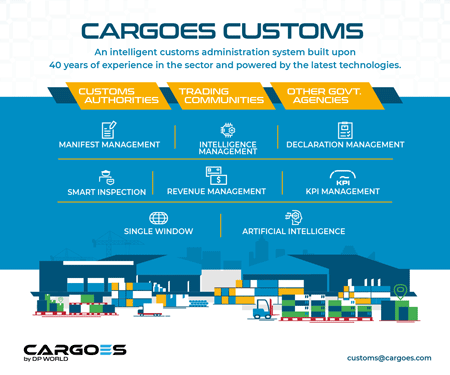Finnish Customs experiments with the carbon footprint calculator
15 June 2023
By Mikael Hyövälti, Innovation Expert, Finnish CustomsA host of Finns imported goods from outside the European Union (EU) in 2022 for their private use. Of these individuals, 250,000 used the Customs Duty Calculator[1] when planning the cost of importing goods. Planning with the Duty Calculator is an effective way of understanding the costs arising from value added tax (VAT) and Customs duties. Customers are also informed of how they will get their imported packages when they arrive across the border.
Finnish Customs is currently experimenting with a new tool to bring additional value for customers who use the Duty Calculator. The tool being tested provides carbon footprint information about the import logistics by air and sea, and is simply called the “Carbon Calculator”. The objective of the experiment is to assess the extent of customer interest in the footprint of logistics, on top of the current cost information about VAT and duties. As more and more people become interested in climate change, it is highly likely that the carbon footprint data on logistics will be well received.
The idea of the Carbon Calculator came from one of our Customs officers from the IT department. At first, the team was assessing the possibility of calculating the carbon footprint of goods. It was noted quite quickly that the footprint varied a lot between different companies, materials and production processes. The more the team found out about the complexities involved, the more this option seemed to offer worse, less accurate results. The path forward consisted of narrowing the area of interest to logistics emissions, as that is also is a vital part of receiving goods when shopping online.
At the time, Finnish Customs was implementing a strategy that included a component for pilot projects. The budget for pilot projects made it possible to start cooperation with VTT, one of Europe’s leading research institutions. VTT already had experience in the area of carbon footprints and had many ideas for the tool. The list of the most important countries of origin was supplied by Finnish Customs, while the research institution provided a calculation method for the carbon emissions generated by transport via ships and aircraft. Working with the research institution was a great experience, ensuring that the method was accurate and that we were thinking along the right lines.
The point of the Duty Calculator is to make the journey of goods from outside the EU ordered by private persons predictable in terms of price. The calculator also includes information about the arrival of the goods purchased online. The customer has to complete some steps in order to obtain the VAT and Customs duties calculation. First, the customer fills in the country of origin. Next, details of the goods are required, including currency, price of the goods, transport and handling costs, and the specific products. After these steps, the calculation is ready.
No further information is needed for the carbon footprint calculation. We use the information of the country of origin as a starting point. Our team has calculated the averages of the distances covered by goods coming from specific countries outside the EU. For example, if a product is ordered from the United States, the calculator uses the average distance from the most used airports and marine ports in that country to the most used airports and ports in Finland. As means of transport are fully loaded with packages, one package amounts to only a fraction of the emissions they generate. We therefore also needed to estimate the average weight of a package. We have used the average of 500 grams per package in the calculations, as that happens to be the average size of packages shipped to Finland from outside the EU.
The team also kept in mind that the emission information should be easy to digest. Most often, the carbon footprint is a number such as 10 CO2e kg / package. Our team decided to go a step further and thought about examples that would shed some light on the number. We brainstormed multiple ways of communicating the result to the user, for example, presenting the results with a corresponding amount of plastic bags or washes in a washing machine. Everyday examples are a tangible and excellent way to communicate the effects of a good’s carbon footprint.
So how does our team know whether the temporary carbon footprint calculator being piloted should have a sequel in the future? During the planning stage, we decided that tracking user statistics was a good way to measure customers’ level of interest. We are also going to collect user experience data and analyse the results during the pilot. Even if it is decided that the experiment should not have a sequel, conducting experiments is always successful, as gaining insights and learning continuously is the key benefit.
We hope that many customers will find and use the carbon calculation tool. At the same time, this is only one of the experiments that we are currently undertaking, and many more will come in the future. Through our strategy, we are creating new capabilities for fast and iterative small projects that pave the way for a more agile organization. In this world of change, an adaptive and insightful organization is always one step ahead.
More information
https://tulli.fi/en/customs-duty-calculator
[1] See “Finland develops user-friendly duty calculator”, WCO News 89, June 2019. https://mag.wcoomd.org/magazine/wco-news-89/finland-develops-user-friendly-duty-calculator

